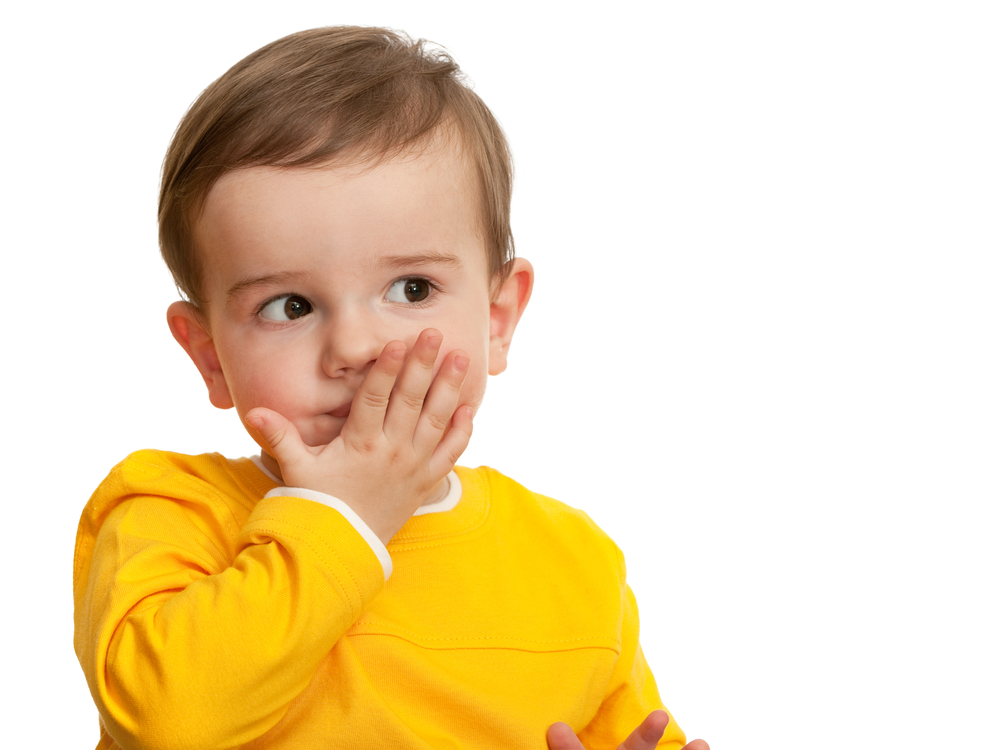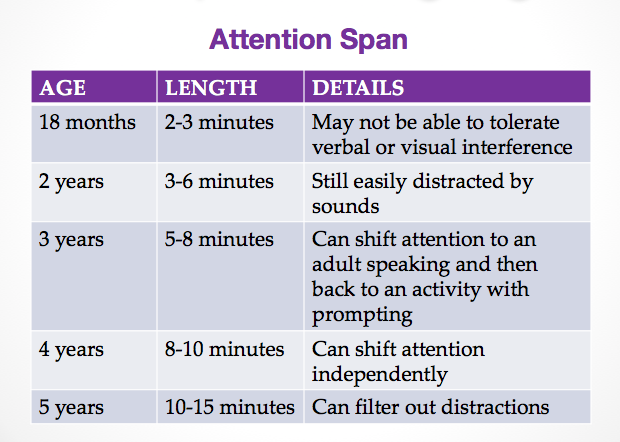What’s the difference between Speech delay and a Speech disorder?

Parents often ask, “Is my child a late bloomer with a speech delay or should I be concerned about a speech disorder?”
Before I answer that question, let’s take a step back and clarify some important terms.
Speech Disorder: when a child is unable to produce speech sounds correctly or fluently or has problems with his/her voice.
Language Disorder: when a child has trouble understanding others (receptive language disorder) or sharing thoughts, ideas and feelings completely (expressive language disorder)
Language or Speech Delay: when a child’s speech and/or language is developing in the right sequence, but at a slower rate than norms.
Please note that kids develop at different rates and there is a developmental progression to speech development. A sound substitution at 2 years old may be developmentally appropriate but the same error at 4-5 years old would need remediation. We have put together some milestones and red flags for you to investigate. After reading this post, if you have any concerns talk to your pediatrician or a speech pathologist.
Click here for details on the Causes, Diagnosis, Signs / Symptoms, Treatment and Prognosis Speech, and Language Disorders.
Here is a nice article on American Speech and Hearing Association’s website called Late blooming or Language problem?
Language Milestones and Red Flags
Receptive Language Milestones
Receptive Language
- Understanding/Comprehension
- Understanding comes before expression
- It is important to assess other contributing factors such as attention span to distinguish between motivation, inability to follow direction, and / or lack of vocabulary/concept knowledge

- Undestanding / Comprehension Milestones
- Ages 1 to 2
- Should be consistently responding to name (by 9 months)
- Follows simple commands
- Understands simple questions
- Listens to simple stories, songs, and rhymes
- Points to pictures in a book when named
- Points to a few body parts when asked
- Understands 50-100 words
- Ages 2 to 3
- Follows two step directions
- Follows directions containing adjectives , adverbs, and pronouns
- Can point to pictured actions
- Listens to and enjoys hearing stories for longer periods of time
- Understands 500-900 words
- Recognizes words even when the object is not present
- Ages 3 to 4
- Hears you when you call from another room
- Understands more complex questions
- Follows three step directions
- Ages 4 to 5
- Follows longer directions
- Follows classroom directions
- Attends to a short story and answers questions about it
- Hears and understands most of what is said at home and at school
- Begins to learn from listening
- Ages 1 to 2
- Understanding / Comprehension Concepts
- Ages 1 to 2
- In
- On
- More
- Ages 2 to 3
- One / All
- One, Two
- Big / Little
- Off
- Out
- Together / Away
- Wait
- Same / Different
- Some
- Rest
- Ages 3 to 4
- Empty / Full
- Under
- In front / In back
- Clean / Dirty
- Night / Day
- A lot
- Both
- Next to
- Besides
- Between
- Most
- Shapes
- Colors
- Ages 4 to 5
- Comparatives
- Superlatives
- Time concepts
- Order concepts
- Near / Far
- Through
- Whole / Half
- Opposites
- Each
- Every
- Ages 1 to 2
Expressive Language Milestones
How a child communicates (expresses himself)
- Five parts of expressive language
- Semantics: vocabulary
- Phonology: speech sounds
- Morphology: grammar
- Syntax: sentence structure
- Pragmatics: social language
- Semantics
- First words are spoken around one year
- Vocabulary depends on what is most meaningful to the child
- Building a rich representation of new words is important
- By age two, should be using words more often than gestures
- 18 Months
- 20-50 words
- Common objects, actions people
- No/Yes
- Animal sounds
- 20-50 words
- 24 Months
- 100-300 words
- Consistently imitates new words
- 100-300 words
- 30 Months
- 400-500 words
- Common verbs, adjectives and pronouns
- 400-500 words
- 3 Years
- 1000 words
- Uses words to relate ideas and observations
- 1000 words
- 4 Years
- 1,600 words
- Uses words to deliver a message
- Retells stories
- 1,600 words
- 5 Years
- 2,200 – 2,500 words
- Describes
- Relates longer stories
- 2,200 – 2,500 words
- Morphology (Grammar)
- Ages 2 to 2.5
- Present progressive – ing (Example crying)
- Regular plural – s (Socks)
- Negation (No + ____)
- Ages 2.5 to 3
- Possessive- ‘s (Girl’s hat)
- Irregular Past Tense (Fell down)
- Uncontractible Copula (It is)
- Ages 3 to 3.5
- Articles (the, a)
- Regular Past Tense (She jumped)
- 3rd Person Regular (Puppy chews it)
- Ages 3.5 to 4.5
- 3rd Person Irregular (She does)
- Uncontractible Auxiliary (She was laughing)
- Contractible Copula (She’s ready)
- Contractible Auxiliary (We’re hiding)
- Ages 4.5 to 5
- Future tense (We will go)
- Ages 2 to 2.5
- Syntax (Sentence Structure)
- Ages 1 to 2
- Around two years old, vocabulary will be large enough to start combining words into short phrases
- Some early combinations include:
- action + agent (daddy kiss)
- action + object (push truck)
- agent + object (man hat)
- action + locative (in bath)
- entity + locative (doll bed)
- possessor + possession (mommy shoe)
- entity + attribute (water hot)
- Pronouns
- I, it
- Ages 2 to 3
- Uses two and three word phrases
- Uses keywords and sentence starters such as “I want”
- Pronouns
- My, me, mine, you (2 to 2,5)
- Your, she, he, your, we (2.5 to 3)
- Asking questions (focused on needs)
- What?
- Where?
- Whats (blank) doing?
- Answering
- Points to a described object
- Answers simple questions logically
- Answers critical thinking questions
- Where?
- Who?
- What’s that?
- What (blank) doing?
- Ages 3 to 4
- Uses three and four word sentences
- Uses conjunctions (and)
- Uses short and simple sentences
- Pronouns
- They, them, us, her, his (3 to 3.5)
- Its, our, him, myself, yourself, ours, their, theirs (3.5 to 4)
- Asking questions (focused on needs)
- Why?
- When?
- How?
- Who or Whose?
- Is?
- Pronouns
- Answering
- Answers more complex questions logically
- Answers “if (blank) then
- Answers questions regarding function
- Who?
- Why?
- Where?
- How?
- Ages 4 to 5
- Uses minimum of five to six words per sentence
- Asks questions with proper sentence structure
- Uses compound sentences combined by: and, but, so, because
- Uses grammatically correct sentences by age five
- Event relation sequences: when, while, after, before, might
- Increased variety of sentence types
- Pronouns
- Herself, himself, itself, ourselves, yourselves, themselves
- Asking questions (focused on needs)
- Uses correct grammar when asking questions
- Asks about future and past
- Uses infinitive (Do you want to (blank)?
- Uses can and may
- Answering
- When?
- How many?
- Ages 1 to 2
- Pragmatics (Social Language)
- Ages 1 to 2
- Follow simple directions
- Waves “bye”
- Repeats actions to make others laugh
- Engages in parallel play
- Pairs gestures with words
- Refers to self by name
- Exhibits verbal turn taking
- Protests by vocalizing “no”
- Engages in pretend play
- Says social words: hi, bye, please thank you
- Talks to self during play
- Practices intonation, imitating adults
- Makes eye contact during interactions
- Ages 2 to 3
- Watches other children and briefly joins their play
- Begins to use language for fantasies, jokes, and teasing
- Makes conversational repairs when listener does not understand
- Engages in longer dialogues
- Participates in simple group activities
- Defends possessions
- Carries on conversation with self and toys
- Engages in simple make-believe activities
- Begins to control behavior verbally, not just physically
- Ages 3 to 4
- Takes turns and plays cooperatively
- Relates personal experience through verbalization
- Begins dramatic play, acting out whole scenes
- Expresses ideas and feelings
- Maintains topic
- Conveys emotions
- Enjoys speaking
- Takes turns in conversation
- Ages 4 to 5
- Uses direct requests with justification
- Uses words to invite others to play
- Uses language to resolve disputes with peers
- Has good control of elements of conversation
- Speaks of imaginary conditions (what if…)
- Understands simple rules of conversation
- Modifies speech to age of listener
- Asking Questions
- Ages 1 to 2
Language Red Flags
- Here are some language delay or disorder warning signs – but please note that all kids develop at different rates. Try not to jump to conclusions. If you are concerned, schedule an appointment for an evaluation.
- Age 18 months
- Does not use six to ten words consistently
- Does not follow simple directions
- Cannot point to body parts
- Does not respond to name (by 9 months)
- Age 2 years
- Has a vocabulary of less than 50 words
- Has a decreased interest in social interactions
- Is not combining words into phrases
- Does not imitate words or actions
- Age 3
- Does not use simple sentences
- Strangers have a difficult time understanding what they are saying
- Does not play with or talk to other children
- Does not ask or answer simple questions
- Age 4
- Is not able to tell simple stories
- Talks only about the here and now
- Puts words in the wrong order in a sentences
- Leaves out words or grammar structures in a sentence
- Does not follow multiple step directions
- Age 5
- Uses only short phrases to communicate
- Does not engage in reciprocal conversation
- Cannot answer questions
- Any age
-
- Regression in skills
- Difficulty with transitions
- Repetitive behaviors
- No interest in communicating with others
- Lack of interest in toys/games
- Lack of eye contact
-
- Age 18 months
Speech Milestones and Red Flags
- Distortions – a phoneme that does not sound quite right. For example Go Shlow down for Go Slow.
- Substitutions – when one sound is replaced with another sound. For example, Weady to go for Ready to go.
Note that some errors are developmentally appropriate depending on the child’s age, and thus do not indicate an articulation disorder. We use the Goldman-Fristoe to test articulation. It’s the method we use to determine if a child has a speech delay or a speech disorder.

-
-
- Overall Intelligibility
- Ages 18 to 24 months
- 25 – 50%
- Ages 2 to 3
- 50 – 75%
- Ages 4 to 5
- 75 – 90%
- Ages 5+
- 90 – 100%
- Ages 18 to 24 months
- Lisp
- Frontal Lisp:
- Tongue protrudes through the front teeth
- The /s/ and/or /z/ sounds like a “th”
- Developmentally appropriate until age 4 ½
- Lateral Lisp:
- Tongue is in a position close to that of an /l/
- The air flows over the sides of the tongue
- Sounds “slushy”
- Not developmentally appropriate at any age
- Frontal Lisp:
- The letter “R”
- Mastered around age 7
- Many children are able to work on this sound earlier
- Types of /r/:
- Pre-vocalic: the /r/ starts the word (red, read, etc.)
- Vocalic /r/: -er, -ar, -or, -air, -ear, -ire
- Blends: /r/ plus another consonant
- Overall Intelligibility
-
Speech Articulation Red Flags
- Cannot produce vowels or the consonant sounds /p/, /b/, /m/, /w/ by age three
- Cannot produce /t/, /d/, /k/, /g/, /f/ by age four
- Inconsistent errors (“cup” could be: cup, pup, up, cuh)
- Is not understood by familiar listeners
- You feel like you are consonantly “translating” for your child
- Your child becomes frustrated when not understood
Concerned? Ask for help.
If you have concerns about a language or speech delay or concerned about language or speech disorder, don’t be afraid to ask for help. It has been proven time and time again that early intervention is key. Talk to your pediatrician first, but if you have real concerns contact a speech pathologist who has been specifically trained in diagnosing speech and language issues.
Don’t be overly worried.
But, do not be overly worried. In a study by Dale et. al.: (Illusory Recovery: Are Recovered Children With Early Language Delay at Continuing Elevated Risk?) up to 50% of children with language or speech delay will catch up by age 4. Children who “recover” from their language or speech delay by age four showed that they were not at a significantly higher risk of future language problems.
